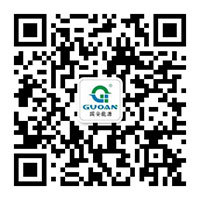Lithium cobalt oxide battery
----Guoan Energy Technology (Dongguan) Co., Ltd. R&D Center
I. Structure and Working Principle of Lithium Cobalt Oxide Battery
Lithium cobalt oxide batteries use lithium cobalt oxide (LiCoO₂) as the cathode material, graphite as the anode, and an organic solution or polymer as the electrolyte. Charging and discharging are achieved through the intercalation and deintercalation of lithium ions between the cathode and anode.
Charging process: Lithium ions are deintercalated from the cathode (LiCoO₂ → Li₁₋ₓCoO₂ + xLi⁺ + xe⁻) and intercalated into the graphite layers of the anode (6C + xLi⁺ + xe⁻ → LiₓC₆).
Discharging process: Lithium ions are deintercalated from the anode and return to the cathode, forming a stable structure (Li₁₋ₓCoO₂ + xLi⁺ + xe⁻ → LiCoO₂).
II. Performance Characteristics
Advantages
- High energy density: The tap density reaches 2.4-3.2g/cm³, suitable for the high volumetric capacity requirements of small devices.
- Excellent cycle performance: Capacity decay per cycle <0.05%, initial discharge specific capacity >135mAh/g.
- Stable voltage platform: The 3.6V discharge platform accounts for >85%, ensuring stable output.
Disadvantages
- High cost: Cobalt resources are scarce and concentrated in the Democratic Republic of Congo, with significant price fluctuations (at the beginning of 2025, the price of cobalt once fell to 140,000 yuan/ton, but rebounded later due to export bans).
- Safety hazards: High temperatures or overcharging can easily lead to thermal runaway, requiring a strict battery management system.
- Actual capacity limitation: Only about 50% of the theoretical capacity (approximately 140mAh/g) is achieved.
III. Application Areas
- Consumer electronics: Dominates the market for portable devices such as mobile phones and laptops due to its small size and high energy density.
- Small power equipment: Used in some drones and power tools, but applications are limited due to cost constraints.
IV. Market Dynamics and Challenges
- Impact of cobalt price fluctuations: After the Democratic Republic of Congo suspended cobalt exports in 2025, the price of lithium cobalt oxide materials increased by 22.22% within a week, pushing up battery costs.
- Competition from alternative materials: Lithium iron phosphate and ternary materials (nickel cobalt manganese/aluminum) are squeezing the market share of lithium cobalt oxide in the power battery field due to their cost advantages and safety.
- Supply chain risks: 80% of China's cobalt relies on imports, with low corporate inventories, intensifying short-term price speculation.
V. Technological Development Trends
- Material modification: Research and development of doping and coating technologies to improve thermal stability and mitigate safety issues.
- Improved recycling system: Reducing reliance on virgin cobalt through the recycling of waste batteries.
- In summary, lithium cobalt oxide batteries maintain a core position in the consumer electronics field due to their performance advantages. However, resource constraints and cost pressures are driving the industry towards a diversified material system.
Service Hotline
Email:zhangjie@ganeny.com
Website:www.ganeny.com
Address: No. 79, Shayuan Road, Shabu, Dalang Town, Dongguan City, Guangdong Province, China

Official Public Account
Privacy Policy | SEO | Support:300.cn
